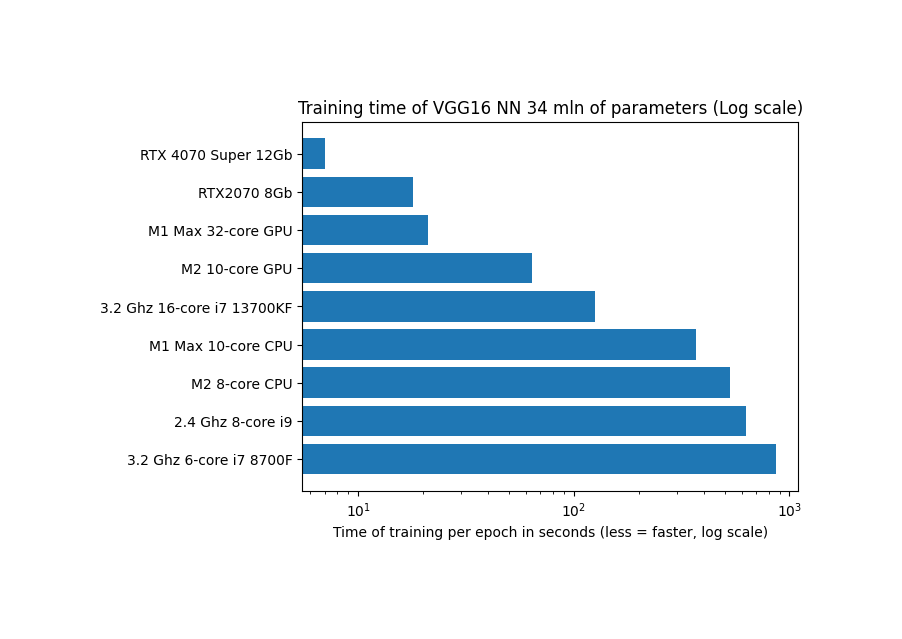Install conda (as possible option use https://github.com/conda-forge/miniforge/releases)
chmod +x ~/Downloads/Miniforge3-MacOSX-arm64.sh
sh ~/Downloads/Miniforge3-MacOSX-arm64.sh
Create conda environment (not for Windows):
source ~/miniforge3/bin/activate
conda create -n tensorflow python=3.9.13
conda activate tensorflow
Install dependencies (for M1/M2 chips)
python -m pip install tensorflow
python -m pip install tensorflow-metal
brew install libjpeg
python -m pip install matplotlib jupyterlab
Install dependencies (for x64 MacBooks)
conda install tensorflow
brew install libjpeg
conda install -y matplotlib jupyterlab
Install dependencies & create env (for Win GPU machine)
Full guide - https://www.tensorflow.org/install/pip#windows-wsl2_1
Install WSL, probably good idea to keep Python 3.10 due to the following bug
wsl --install
Install dependencies (TF version 2.15.1 is temporary fix cause of bug)
pip install tensorflow[and-cuda]==2.15.1
pip install matplotlib jupyterlab
Test installation by running Jupyter lab
jupyter lab
Run tf_fashion_mnist_train.ipynb or tf_mnist_train.ipynb, check Activity monitor to check that GPU is utilised
Test results (comparison of different approaches):
+-----------------------------------------------------------------------+-----+-------------------------------+----------------------------------------+---------------------------------------------------------+
| Hardware | GPU | Avg train (MNIST, 93k params) | Avg train (MNIST Fashion, 412k params) | Avg train (VGG16, CIFAR-100, 34mln params) |
+-----------------------------------------------------------------------+-----+-------------------------------+----------------------------------------+---------------------------------------------------------+
| Apple M1 Max with 10-core CPU, 32-core GPU, 64 Gb RAM | Y | 106 sec | 127 sec | 21s/epoch, 54ms/step (size=128) |
| Apple M1 Max with 10-core CPU, 32-core GPU, 64 Gb RAM CPU ONLY | N | 85 sec | 114 sec | 368s/epoch, 940ms/step (size=128) |
| Apple M2 with 8-core CPU, 10-core GPU, 24 Gb RAM | Y | 109 sec | 123 sec | 64s/epoch, 163ms/step (size=128) |
| Apple M2 with 8-core CPU, 10-core GPU, 24 Gb RAM CPU ONLY | N | 89 sec | 136 sec | 528s/epoch, 1s/step (size=128) |
| 2.4 Ghz 8-core i9 32 Gb RAM | N | 254 sec | 423 sec | 630s/epoch, 2s/step (size=128) |
| Nvidia 8Gb GDDR6 RTX2070 Windows 10 Anaconda 32 Gb RAM | Y | 55 sec | 54 sec | 18s/epoch, 43ms/step (size=128) |
| Intel(R) Core(TM) i7-8700 CPU @ 3.20GHz Windows 10 Anaconda 32 Gb RAM | N | 136 sec | 255 sec | 863s/epoch 2s/step (size=128) |
| Nvidia 12Gb GDDR6 RTX4070 Windows 11 Pip 64 Gb RAM | N | 44 sec | 42 sec | 7s/epoch, 19ms/step (size=128) |
| Intel(R) Core(TM) i7-13700KF CPU @ 3.40GHz Windows 11 Pip 64 Gb RAM | N | 45 sec | 68 sec | 126s/epoch, 321ms/step (size=128) |
+-----------------------------------------------------------------------+-----+-------------------------------+----------------------------------------+---------------------------------------------------------+
